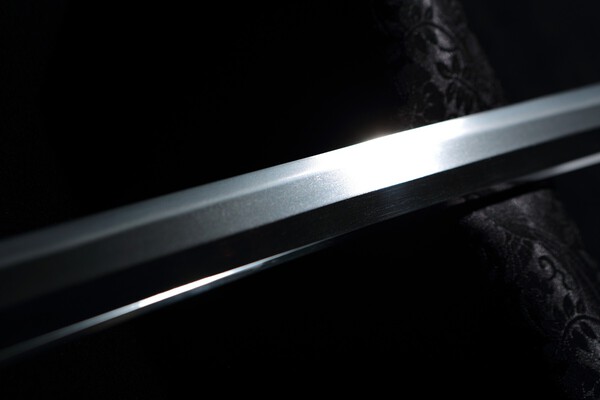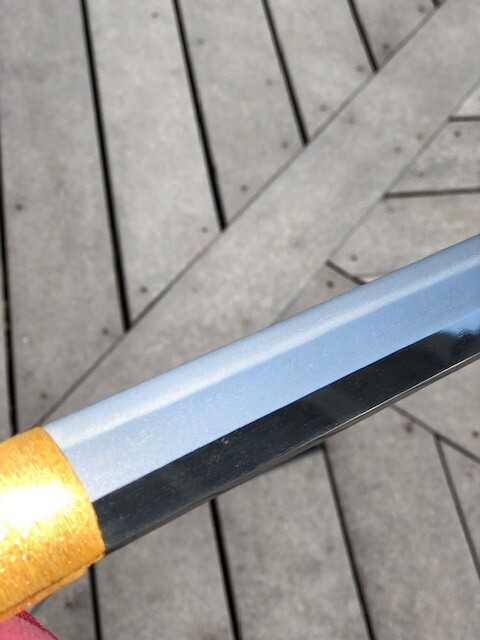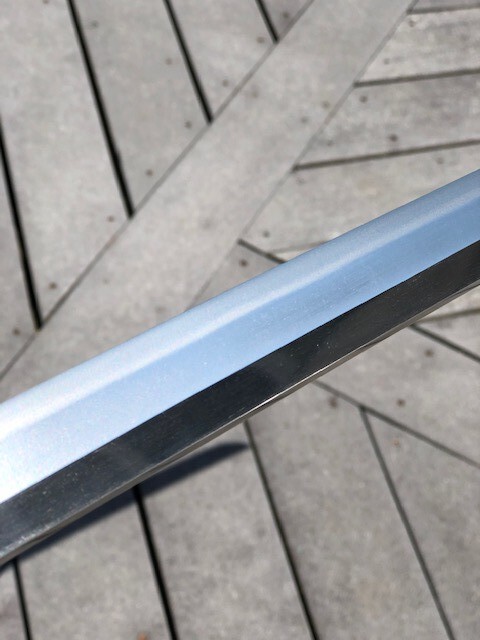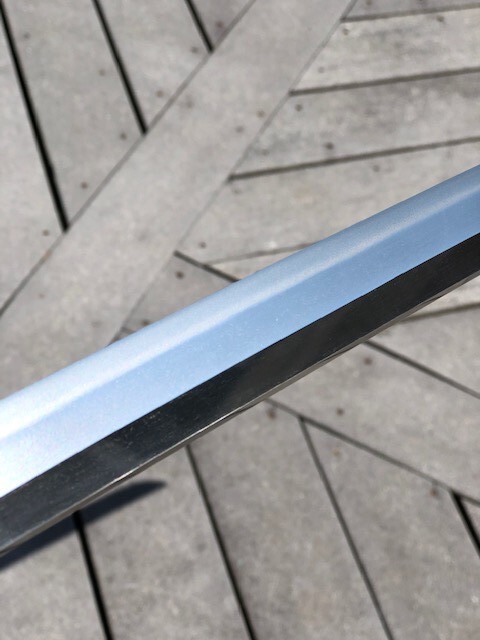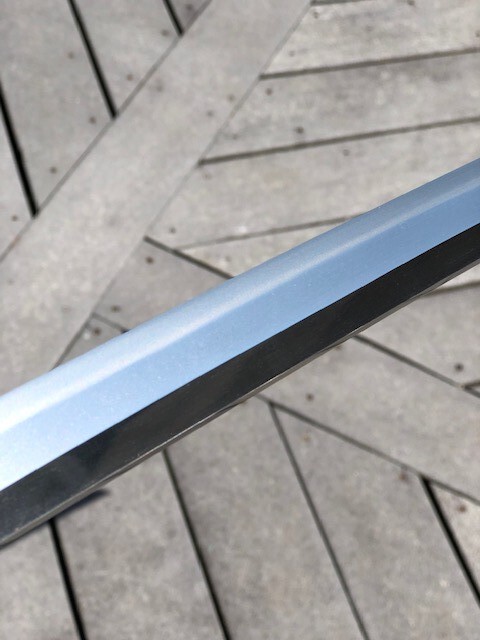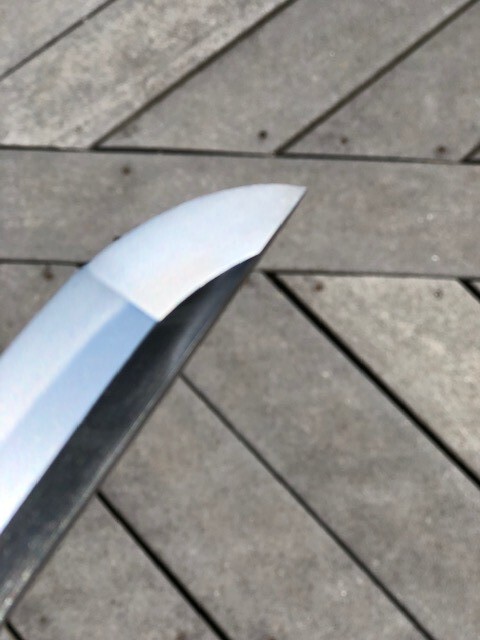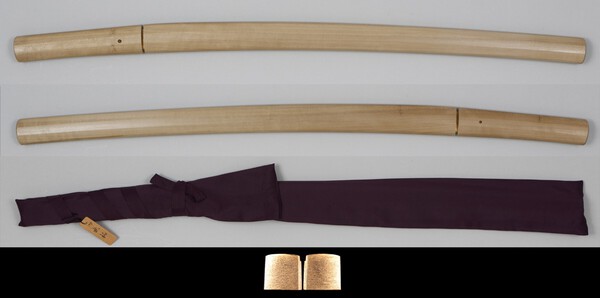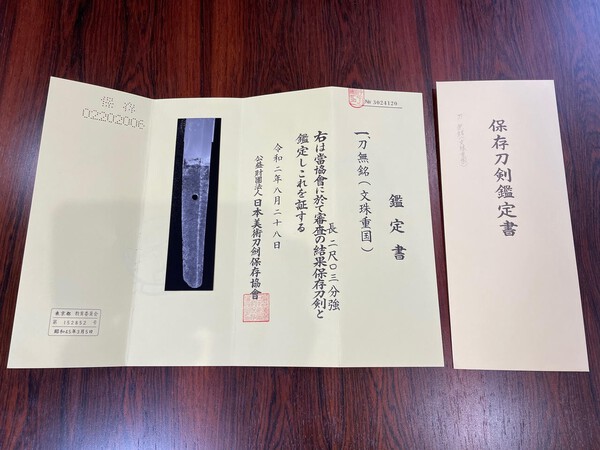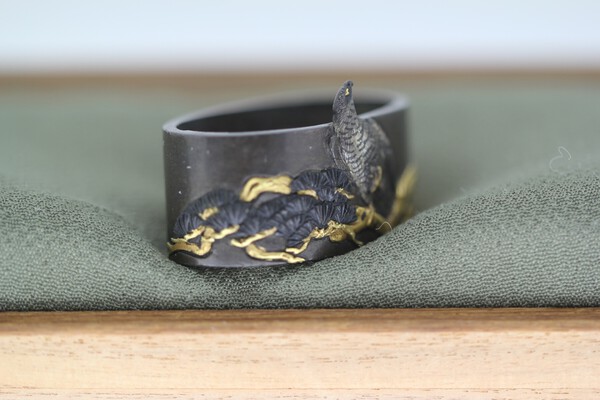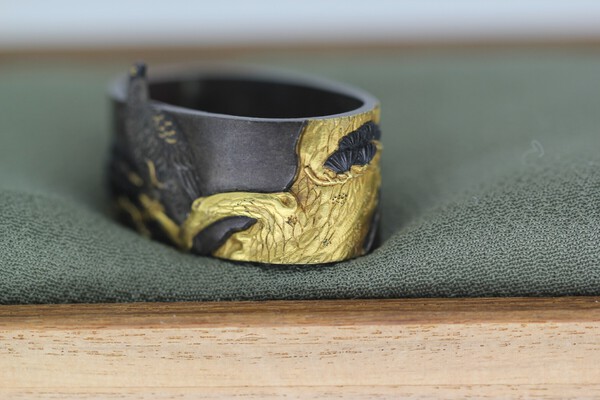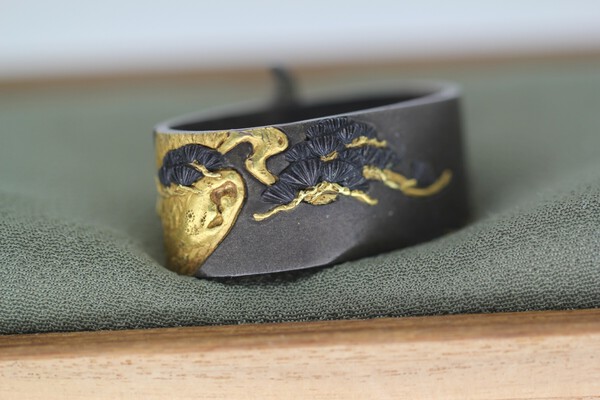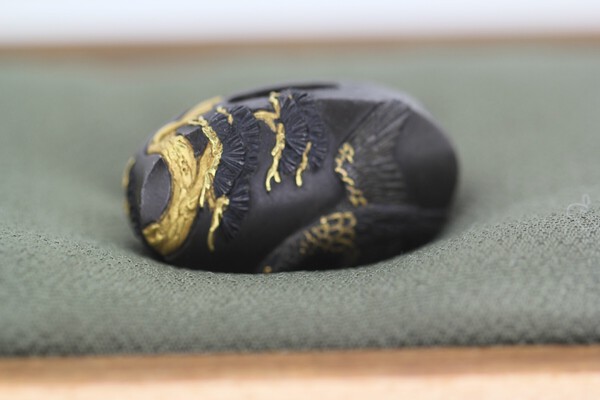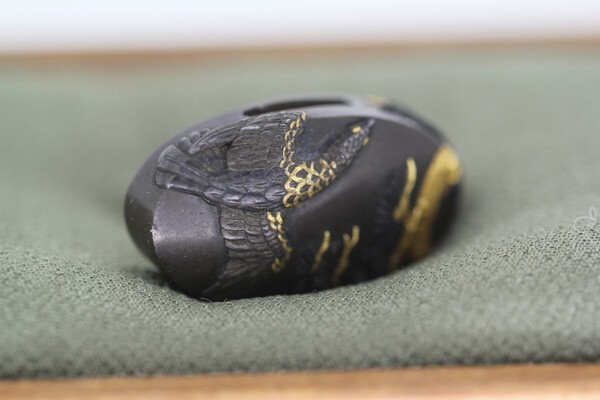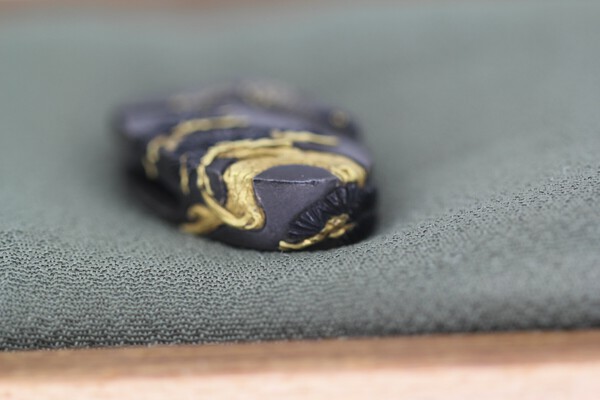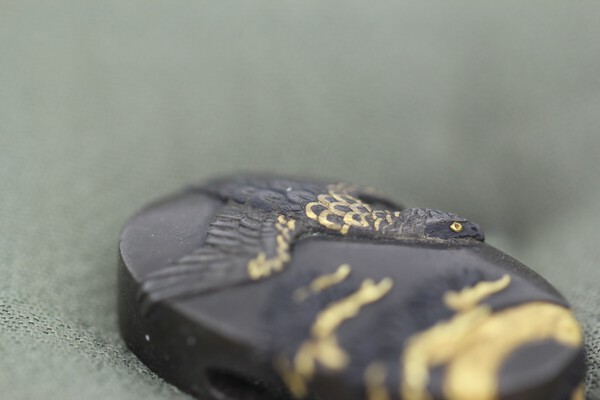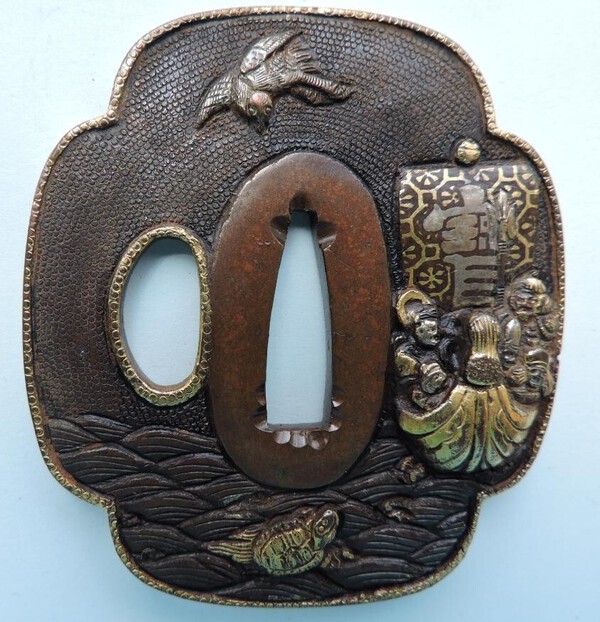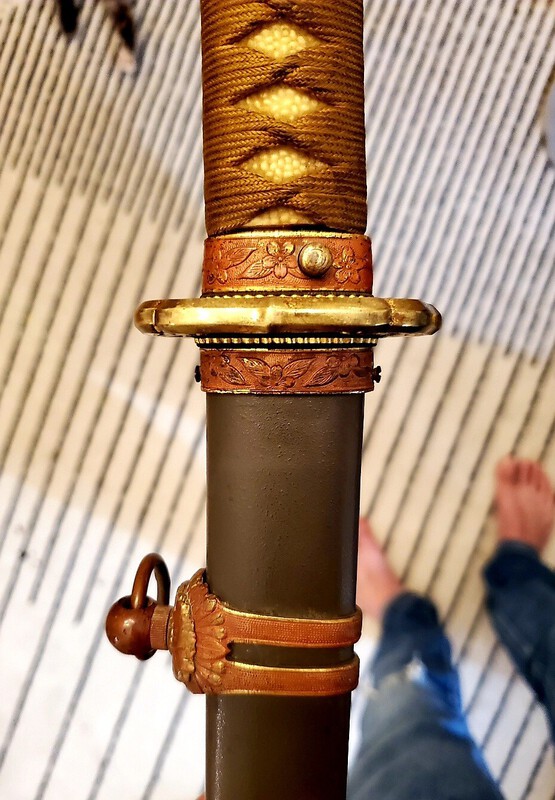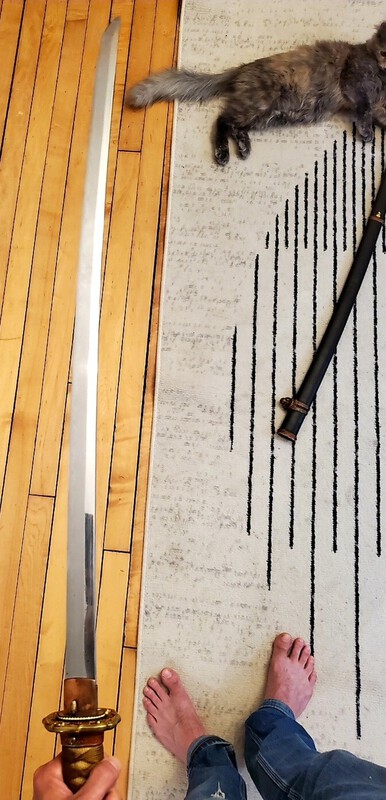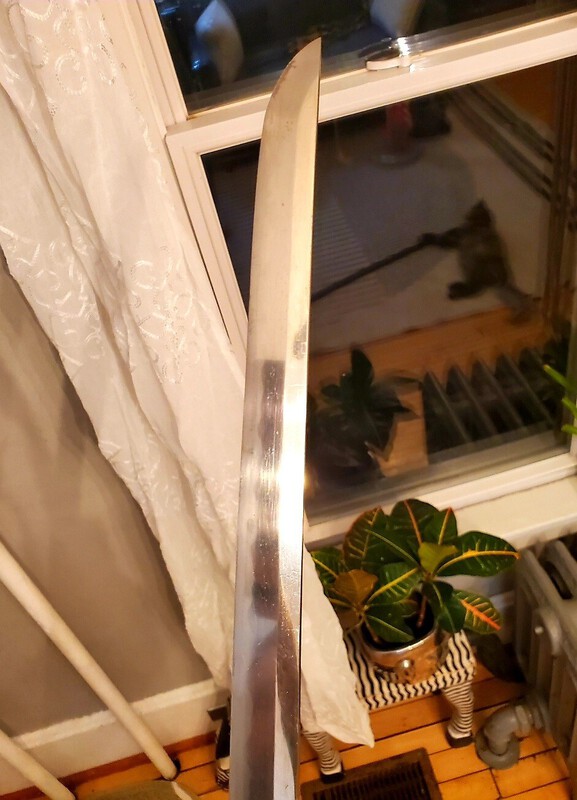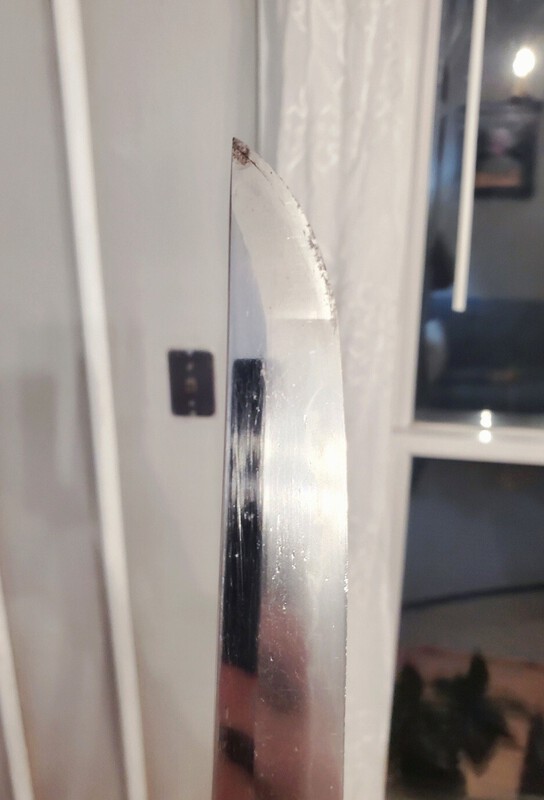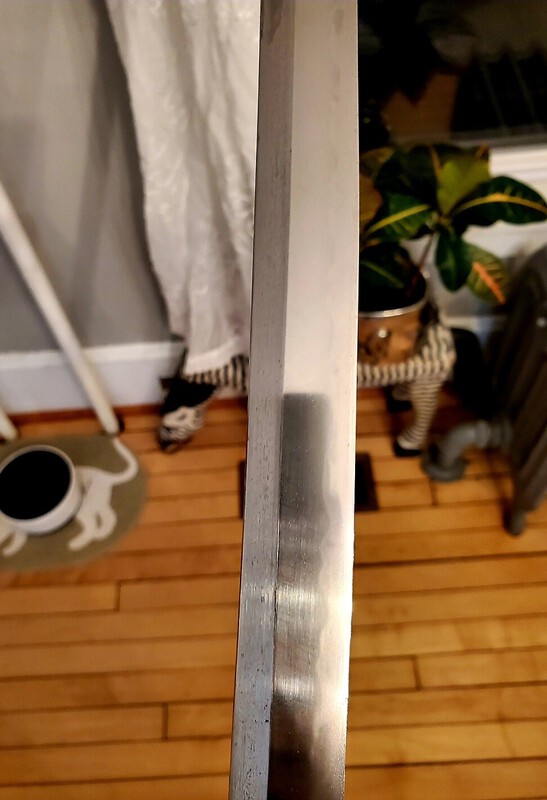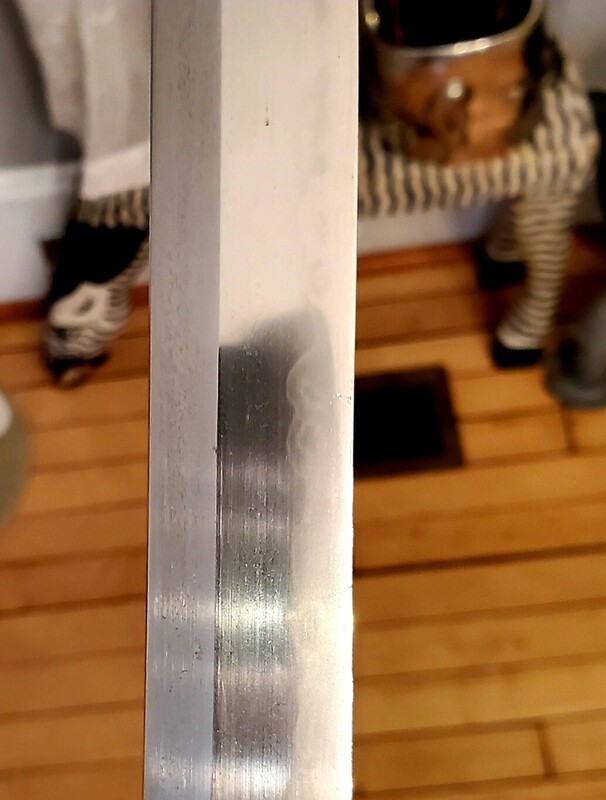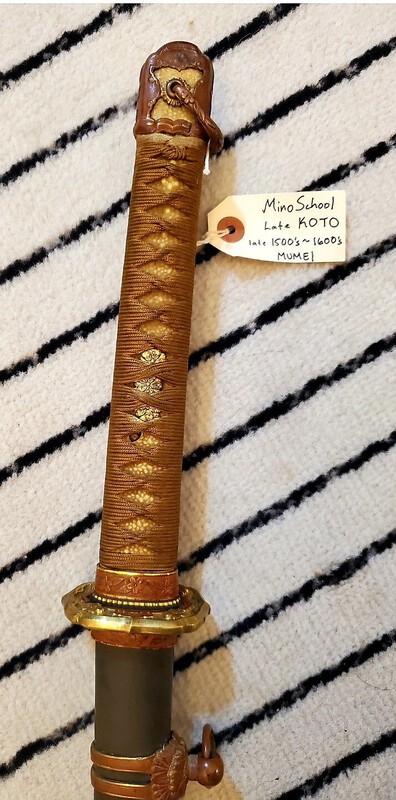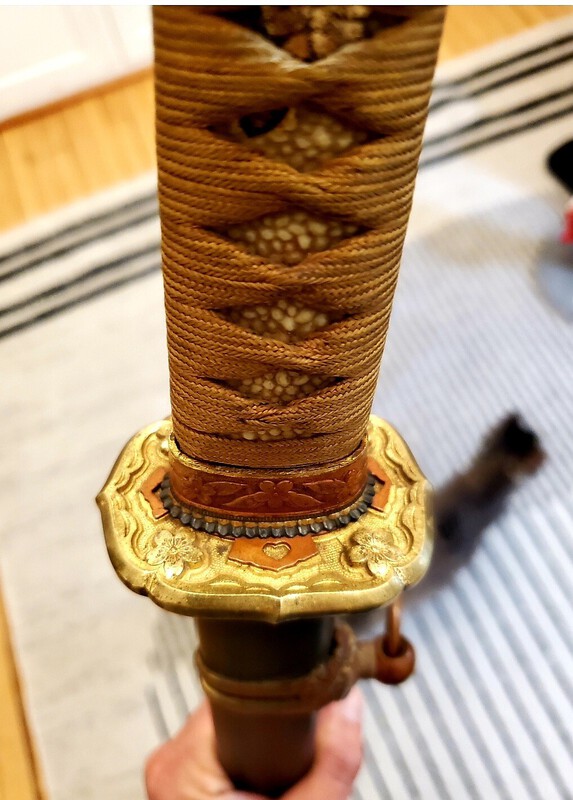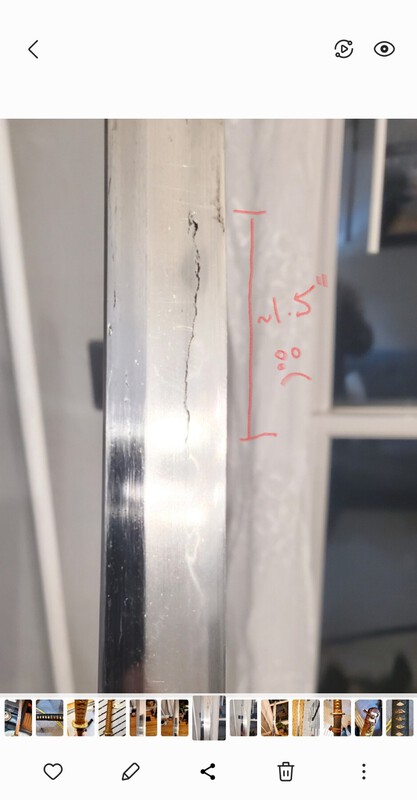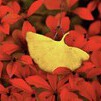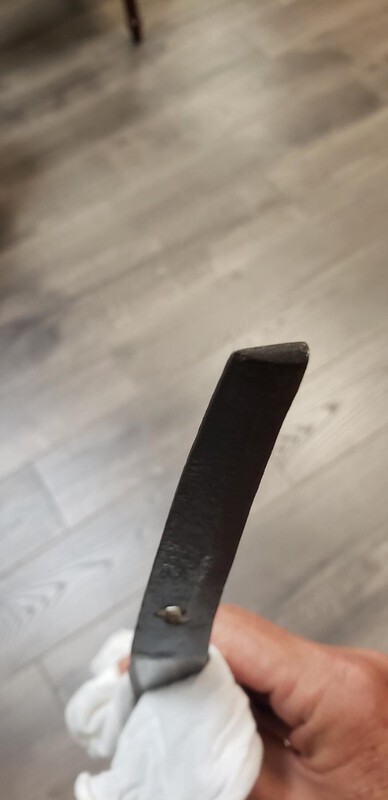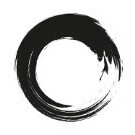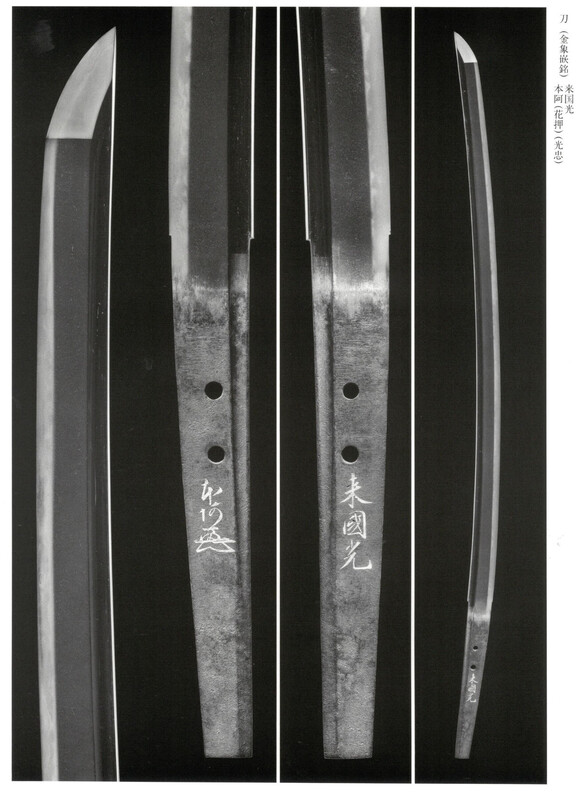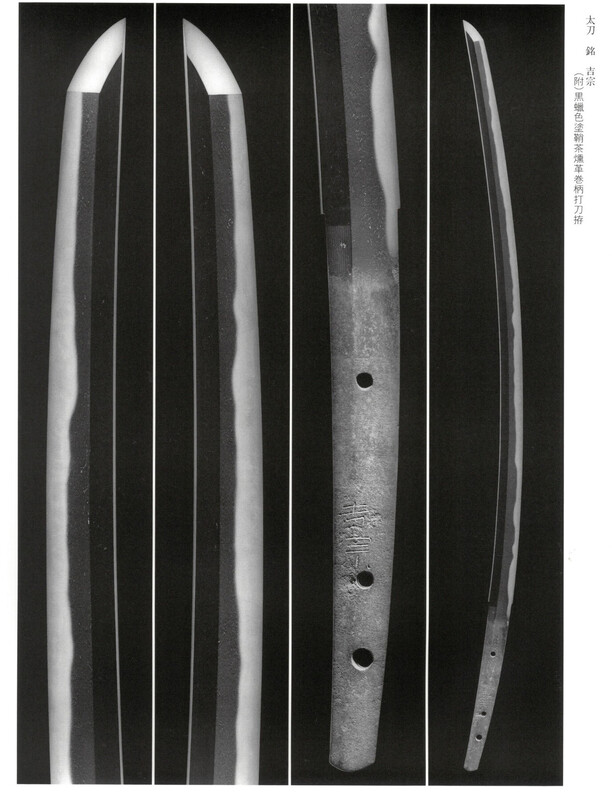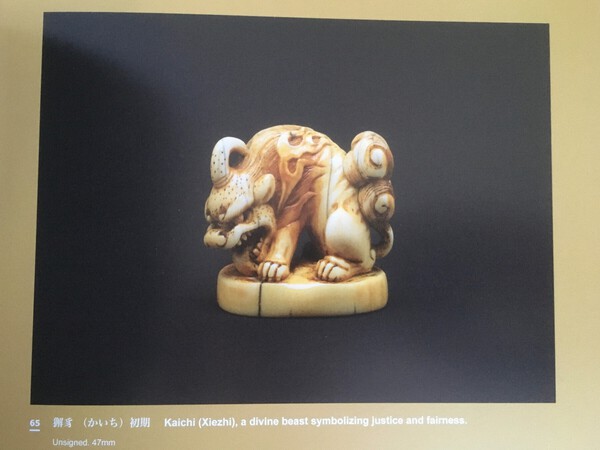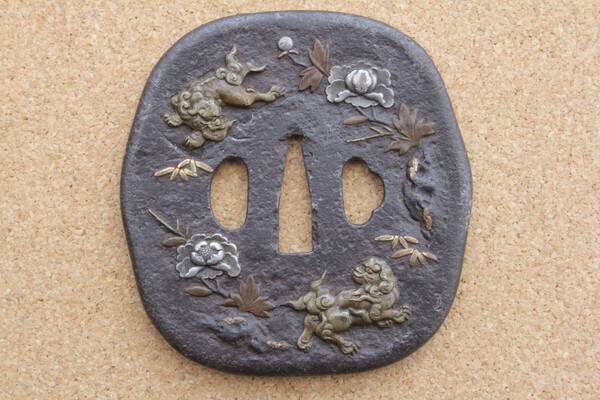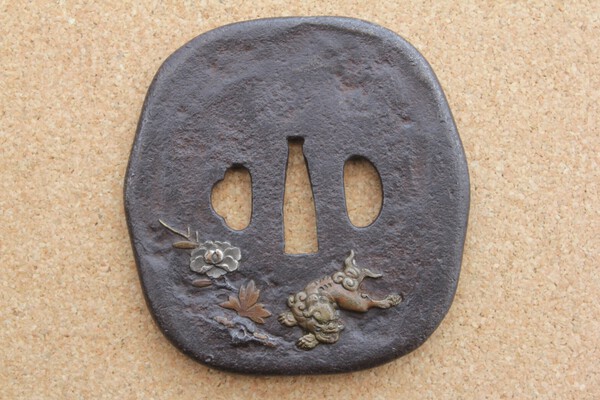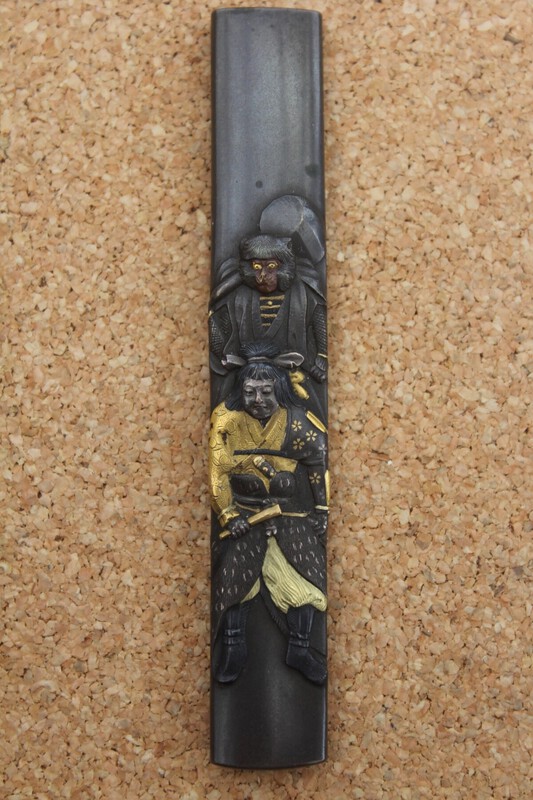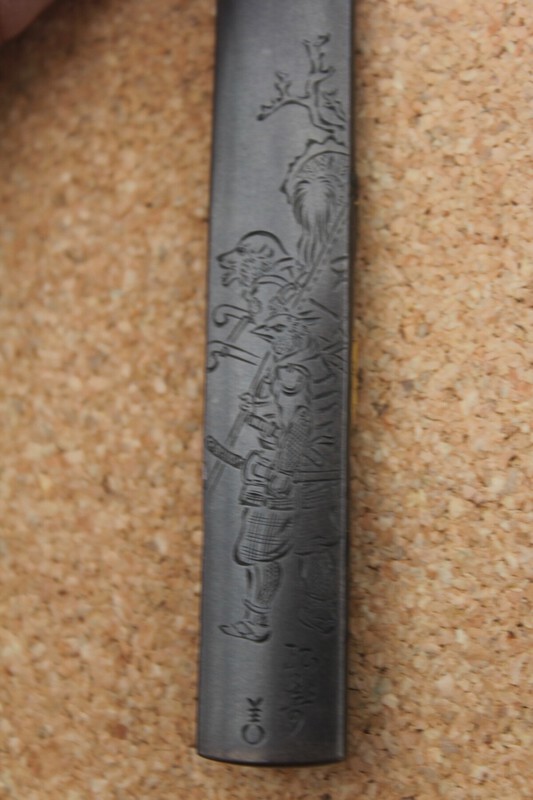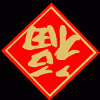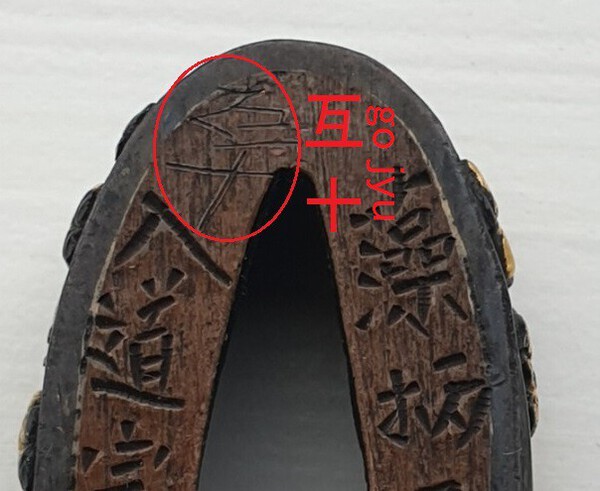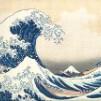Leaderboard
Popular Content
Showing content with the highest reputation on 05/26/2022 in all areas
-
So there have been a small handful of fittings coming up on online auction lately here in SA. I picked up that cheap tsuba. And now a kozuka yesterday. Wonder if there was a small collection sold. Anyways, nothing fantastic. But nice. Auction pics were terrible. It is much better than listed. Best part? With almost no collectors here, and no one knowing much, it cost me with delivery…. $16 Can’t get better than that. 🙂3 points
-
2022年度 NBTHK Shinsa Dates And New Procedure for Shinsa Submission Greetings sword friends! I thought it worthwhile to post an update regarding NBTHK shinsa procedures as they have evolved a bit. Mostly, it is about advanced preparation to be eligible to submit items into shinsa. Previously, you could just show up on the days for shinsa submission and drop off the items. Now it requires pre-registration! See below! I previously made this announcement on my new Keichodo Fine Samurai Art Facebook group (check it out), but will continue to make announcements for the NMB as well. NBTHK new requirements: Items for shinsa submission must be pre-registered during the month preceding shinsa. If you fill out shinsa forms by hand, these have to be submitted prior to the 10th day of the month preceding shinsa. If you fill out the forms on-line, these have to be submitted prior to the 25th of the preceding month. April Tokubetsu Juyo 27th shinsa (submission days for items April 4-6) May Hozon/Tokubetsu Hozon fittings (submission days for items May 9-11) June Hozon/Tokubetsu Hozon swords (submission days for items June 1-3) August Hozon/Tokubetsu Hozon fittings (submission days for items Aug. 1-3) September Hozon/Tokubetsu Hozon swords (submission days for items Sept. 5-7) October Juyo Shinsa (68th) (submission dates Oct. 3-5) November Hozon/Tokubetsu Hozon fittings (submission days for items Nov. 7-9) December Hozon/Tokubetsu Hozon swords (submission days for items Dec. 5-7) February Hozon/Tokubetsu Hozon fittings (submission days for items Feb. 1-3) March Hozon/Tokubetsu Hozon swords (submission days for items March 1-3)3 points
-
Item No. 231 Fuchi Kashira in shibuichi with gold and shakudo Subject of hawks and pine tree signed Mitsustura Very detailed work with shakudo stripe inlay on the front of the hawk on the fuchi . Similarly , the gold detailing on the kashira appears to be inlay . Much fine work in gold and shakudo of the pine tree . Mitsustura was a lesser known , later artist in the Goto tradition from the first half 19th cent. He appears to be associated with the Hanzaemon line , 5th generation < Benjo > , according to ' Sesko's Genealogies ' page 18. Any info. or corrections welcome. Attached pics are ' file photos ' - I will try to post some better pics when I can photograph the pieces in natural light. Acquired at Auction about six years ago.3 points
-
A yamagane tsuba with remnants of gilding. Muromachi/Momoyama, such a guard would be typically attributed to tachi kanagushi. Whatever the attribution, this is a nice and old soft metal tsuba. The colour of the yamagane is brown and very nice. I will post the dimensions later, but this is a rather thick wakizashi-sized tsuba. The colour of If you want to see a similarly gilded tsuba, there is one (# 38) in "Gai Sô Shi - The Robert E. Haynes Study Collection of Japanese sword fittings" (excellent book, BTW). I post a picture here. $250 (EUR 240) incl. Global Express shipping (w. tracking). PayPal costs extra, for EUR a bank transfer is preferred.2 points
-
2 points
-
2 points
-
2 points
-
2 points
-
Selling my mumei Monju Shigekuni katana. It is believed that this is the 2nd generation whom was active in the Kanbun era (1661-1673). He is rated Jo-saku with wazamono cutting performance (Hawley 90, Toko Taikan 6m) Shinogi-zukuri. Iori-mune, shallow sori. Blade length 61.6cm (2 shaku 0 sun 3 bu 3 rin), sori 1.0cm (3 bu 3 rin), moto-haba 2.86cm, moto-kasane 0.65cm, saki-haba 2.11 cm, saki-kasane 0.44 cm, mekugi-ana(hole) 1, blade weight 606.5g , shirasaya length 87cm Nakago is Ubu. Yasurimes are kiri. Saki is kuri-jiri Jigane : Itame-hada well grained. Mokume and some changes mixed. Jinie attached. Clear chikei appeared. Hamon : Chû-suguha. Senqunenced ko-gunome mixed. Deep nioi appeared. Ko-nie attached. Sunagashis appeared Sword is in polish and in very good condition. The Koi kuchi of the shirasaya is a little tight. NBTHK Hozon Asking $3250 + Shipping and Insurance1 point
-
Re Item No. 231 It would appear that there is also a Mitsustura , using the name Sanshuken , shown on the right side of the fuchi and he is from the Otsuki family , working in Kyoto around mid . 19th cent. Anyway , not Goto but perhaps a more interesting attribution. Many Thanks to George Miller for this info. I tried to take better pictures in natural light but I could not get a decent contrast between areas of shibuichi and shakudo. I have had to revert to the light box and attach the results . The pictures are much more detailed, being close-ups , but to my mind, the more distant views enable the overall effect to shine through. The closer and larger detail is a distraction , but I thought that I would post the pictures anyway as they are more informative about the construction and craftmanship. In summary , the new pictures should be read alongside the originals and not instead of them.1 point
-
The drawers didn’t come with racks and that is what I need to add. The chest and drawers are made with paulownia, so it is very light in weight. I need to find a source of paulownia here in Ontario to make the racks.1 point
-
Very handsome! Can I ask what modifications you made to the drawers? Did the drawers come with sword racks?1 point
-
Looks like a steal. Katana length, in polish and papered to a famous smith. Sure its mumei but at that price - what's not to love?1 point
-
1 point
-
1 point
-
It would appear that Piers and Dale have more examples from 'Mr Suzuki's'workshop' in Nagoya. I started a post on 'Mr Suzuki's workshop' back in 17 Jan 2021 in order to highlight a genre of tsuba that were regularly appearing on Ebay and auction sites and often described with words like shakudo nanako, plus Mino and Goto. They were in fact Nagoyamono and made from nigurome, the base of shakudo without the gold. They had an identical form (see takarabune example below) with a characteristic pattern of tagane-ato around the nakago ana and NMB members sent in about 20 different designs. In view of the tagane patterns i surmised that they came from the same workshop and this was a quality assurance marks (I have a rubbish one without the tagane marks which I assume failed QA). Mr Suzuki was the fictitious name that I gave to the unknown owner of the workshop. From your examples and the pics I took of another 'shakudo nanako' tsuba that I saw at Bonhams this month (May 12, lot 135, see attached) It would seem that 'Mr Suzuki' produced a range of nigurome tsuba besides the original shape that I posted. So much to learn, John1 point
-
Have a type 98 Mino School mumei Koto blade with 27.5" nagasa with one non-fatal opening on the top 1/3 of the blade I'll share a pic of below (very last photo). It actually has a really neat hamon with all these little details and no chips/knicks. Type 98 Koshirae is honestly in great condition with aluminum saya. Overall though it has a lot to be appreciated as a starter blade with some serious age under its belt that someone felt was worthy to be mounted for and brought into battle in WWII. Someone loved it.1 point
-
Kanbun does not always equal a straight Sugata.1 point
-
Hi Sasch, I think you're setting yourself up for disappointment. Under $1K for a Nihonto will get you something that is either low to mediocre quality or a blade with serious problems. When the time comes to sell and move up, you'll have trouble recouping the investment. Double the investment and take the time while you're raising it to study. You'll know more, which will allow you to buy something worthy and pleasing to own. Grey1 point
-
Well I guess I can say I have healthy obsession with Kotō swords and researching them. I just got my latest book package from Japan and I am really hyped. Just finished going through all items in Jūyō 43 session today. I think some items are just so amazing it is very easy to realize when you just turn the page and see the oshigata of the item in the book. I am having hard time putting it into words but as I have gone through thousands and thousands of Jūyō items in the books, there are some that immidiately hit me when seeing them in the book, and these can be shortened mumei pieces too. For example there was a mumei Norishige that wowed me and absolutely amazing mumei Chōgi in Jūyō 43 session. When I actually researched those swords both had achived Tokubetsu Jūyō later on. I can only imagine how amazing the swords are in real life as they have this wow-effect even seen in book. Now on the other hand there are some items from the same session that have achieved Tokubetsu Jūyō that I am not immidiately understanding. Sometimes appreciation is very complicated matter. Also I think most sword lovers know Jūyō Bunkazai but I am not sure if people are aware that there are lower level Bunkazai as well. I am not too well versed in Japanese cultural heritage preservation so Japanese members can correct if I write something wrong. There are nation level Bunkazai (国) These are Jūyō Bunkazai, second tier is prefecture level Bunkazai (県) and third tier are city level Bunkazai (市). I have pretty much gone through and picked items of my interest out of all of the nation and prefecture Bunkazai, and I am about 200 cities deep at city level but Japan has lots of cities... There are actually only quite few swords in the prefecture and city designated Bunkazai as Japan has rich history of other culturally important aspects too. It has been bit boring side project of mine when I run out of other research material as info on these is often lacking online, being just one line about the item. This just came to my mind to put this out there as there was Hōju tachi in Jūyō 41 that I previously knew only as Ichinoseki City Bunkazai and owned by Ichinoseki City Museum. And today I found very stunning tachi by quite unknown Ōei era Bizen smith Sadaie at Jūyō 43, that I previously only had as Morioka City Bunkazai. While both of these smiths would be far away from classical top tier smith rankings to me personally they are much more important than just another regular mumei Rai Kunitoshi or Shizu etc.1 point
-
Interesting article on Yasukunito (Yasukuni Shrine) blades: http://www.jp-sword.com/files/yasukuni/yasukunito.html1 point
-
So I showed the Nakago to a friend of mine who frankly, is the one who has re-kindled my love of Japanese swords. Unbeknownst to me, he has a collection of some very impressive swords ranging in value from $6500 to well over $10,000 (all papered) and he has been bringing them to the shop here to show them to me. We looked at the Nakago of one of his papered Edo swords and loosely compared how it looked on the top and bottom edges to my sword and we've both come to the conclusion that nothing appears to have been done to the top or bottom edges of the Nakago of my sword. At least not that we can tell. I've also been looking at a lot of Kanbun period swords online and several of them have a Nakago that looks a lot like mine. Here are pics of the bottom edge of my sword as well as an online picture of another sword from the same time period. I'd like to know what aspects say it has been altered? Thank you again for the knowledge!1 point
-
It does appear to be the Yasukuni shrine smith Yasumitsu. Nice find and likely deserves a professional restoration if there are no serious issues with the blade. Looks a bit like the nakago (tang) has been cleaned. If so, don't do anything further to clean the nakago or remove rust on your own.1 point
-
Yasumitsu I think the full date reads First 2 kanji = Showa (starts 1926) 3rd & 4th kanji = 10 + 4 = 14 (14th year of the Showa period = 1939) 5th kanji = Nen (year) 6th kanji = 1 7th kanji = Gattsu (month) 8th kanji = Kichi (Lucky) 9th kanji = Hi (day) So it would read: " A lucky day in January, 1939" I believe he might be a Yasukuni smith? There are many here who will be able to help out much more.1 point
-
1 point
-
My limited knowledge says the Mishina school but that's only because I'm biased Kudos to the fumbari takers. Clearly it has an adjusted nakago for various reasons.. p.s. and the mekugi Ana location, not to mention kissaki shape make me feel mishina school.. Just guesses 😁 J.1 point
-
1 point
-
Unlike many who focus on highest quality etc. for me that is not too important. My list in the 1st page was pretty much what would general belief in Japan be (with signature requirement added on as personal twist). I am mostly fixed on shape and size, I feel that is my thing in sword appreciation and has been for quite a while now. Of course I can see beauty in some features too but more often I would choose bigger/signed/ubu/more imposing item instead of nicer looking one. As if you combine amazing quality to pieces that I like they are pretty much forever out of my personal reach. Here are two quite interesting items that I have seen and are in European collections. 1st Is in the collection of Samurai Museum Berlin. Now I did ramble about not seeking for quality and yet this one is spectacular quality. The wide shape of this is what initially got me to like this but when looking this in hand it was easy to appreciate the fine craftsmanship and hada etc. When in original form this must have been beast of a sword. Now here is where the shape and size do it for me. This is appointed to Rai Kunimitsu and is a top tier item. However even if the craftsmanship would not be at this level, I would like it almost equally if it was lower quality and appraised as Nakajima Rai, or even pretty much the lowest Rai-related Echizen Rai. 2nd This is in an European private colletion. In order to understand the rarity of this you need to know how many works of Fukuoka Ichimonji smith Yoshimune are out there. So far I have only found 3 signed tachi and 1 gakumei wakizashi. 1 tachi is Jūyō Bunkazai at Tsukubasan Jinja, then there is this TJ tachi and 1 Jūyō tachi. Now of course the item is another top tier item of wonderful quality but even with severe pitting/flaws etc. signed & verified item such as this would be historically very important (perhaps I can someday find badly flawed signed Ichimonji ). There are also other Yoshimune smiths in Bizen. Here is extremely spectacular signed 94,3 cm ōdachi by Yoshimune, it was thought at Jūyō shinsa to be the work of Yoshioka Ichimonji Yoshimune (Late Kamakura - Early Nanbokuchō smith), however it got rolled to be work of much earlier Ko-Bizen Yoshimune (Late Heian period) at Tokubetsu Jūyō evaluation. Even owning a single item like this would be a dream collection, sword like that is to me the holy grail. https://web.archive.org/web/20161107181756/https:/www.kusanaginosya.com/SHOP/368.html1 point
-
1 point
-
Item No. 230 Iron Tsuba with shibuichi , silver , copper and gold 9.68 cm x 9.30 cm x 0.55 cm Subject of Shishi , peonies and grasses , Nara school , 18th cent. unsigned A large tsuba , weighing in excess of 230 grams with nicely executed decoration , although to the western eye, with almost a ' naive ' feel to it . NBTHK Hozon papered to Nara.1 point
-
Item No. 229 - Iron Tsuba with brass and enamel 8.26 cm dia. x 0.55 cm Subject of fruiting vines Signed - Oshu Aizu Shoami Nagatsugu , approx 1625. A tsuba nearly 400 years old with one of the earliest examples of a successful application of coloured enamels to appear on tosugu. Masters like Hirata Donin ( d. 1646 ) started a fashion for the multi coloured finish . The makers struggled for many years to develope durable , correct shades - a lot of which is controlled by the firing technique. The fact that this piece has survived for so long virtually intact testifies to their eventual success. Provenence - Ex Naunton Collection , Plate XVIII , No. 24.1 point
-
Item No. 227 Kozuka in Shibuichi with silver , gold, copper and shakudo Subject of Momotaro ( the boy from the giant peach ) with his companions , setting out in search of the Oni King and his subjects. Made by the Michitoshi led branch of the Mito school , the artist is Hirotoshi , with his signature and kao. Hirotoshi was a student of Yoshinaga II. 19th cent. Momotaro's companions on this quest include a pheasant headed warrior and a dog headed warrior , together with a monkey , here shown wielding a war hammer. Painstakingly detailed piece with a lot of fine work , especially on features like the tiger skin Momotaro is wearing. I will try to post sharper images of the reverse side carvings in the next day or so. Thanks to George Miller for his help with this piece.1 point
-
1 point
-
My 2 cents - the stamping of non-traditional blades, didn't really kick in in a big way until December of 1940. There were many non-traditional blades made prior to that which never got stamped. Blades can be found prior to that with stamps, but they are few in number.1 point
-
0 points
-
Well Jimmy, read some quotes on here over the years but that statement has come from someone on the tallest horse i ever did see, more like off a giraffe or even a Trojan horse I have a little time before work so will try and make things a little clear for you. Whilst not an expert and never claim to be i feel ive seen enough in my time to have an opinion. Its no concern whether you like it or not. Earlier, i was referring to the comparison between swords and paintings, so no point going over that again. First, the only thing that matters to me in this hobby is to look at a blade and be able to 1)know its level of quality and 2)be able to work out what it is (the fun part). As for horimono, i dont like intricate carvings on polished bright blades/steel. Show me a beautiful carved soft metal tsuba and thats a different story. I would not want to own a sword solely due to a carving, its the blade/quality alone that is the interest. Obviously, im not saying there is no skill in these carvings!, although i find many lifeless. There comes a time for any "collector" to be honest with themselves and really take a closer look., answer those niggles. Narrow the field, so to speak. Anyways, been an interesting thread, be good to find out more about about why folk pick out certain smiths above others, maybe you could enlighten us ? Best get off to water the bonsai haha0 points
-
0 points



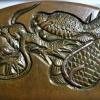

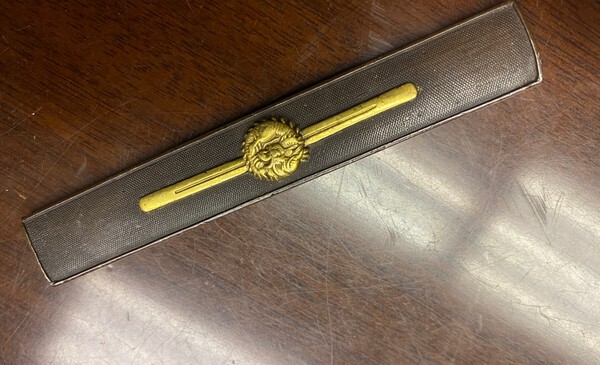
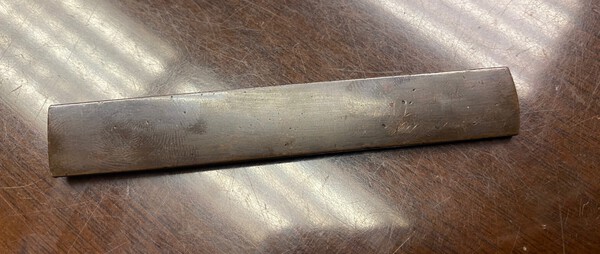


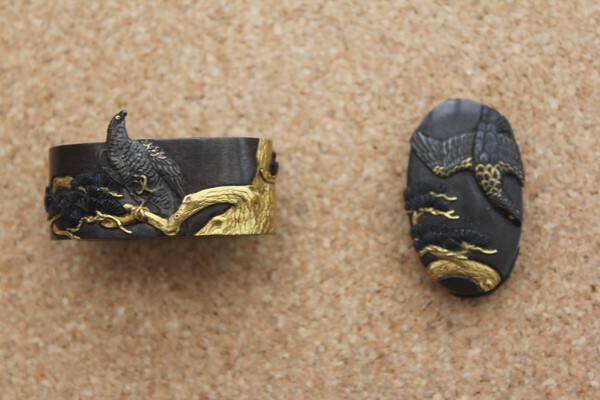
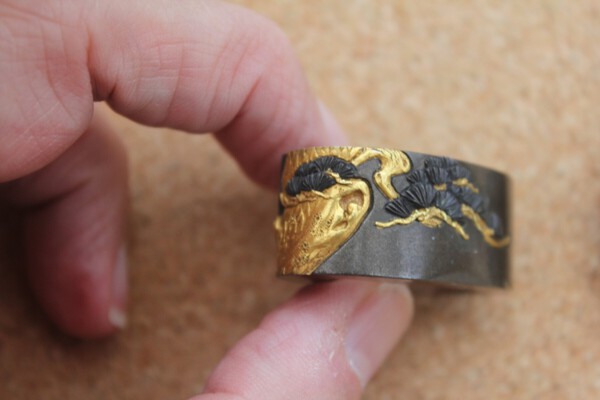
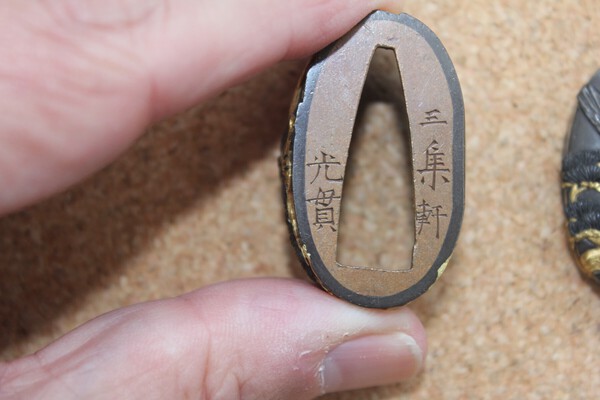
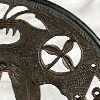
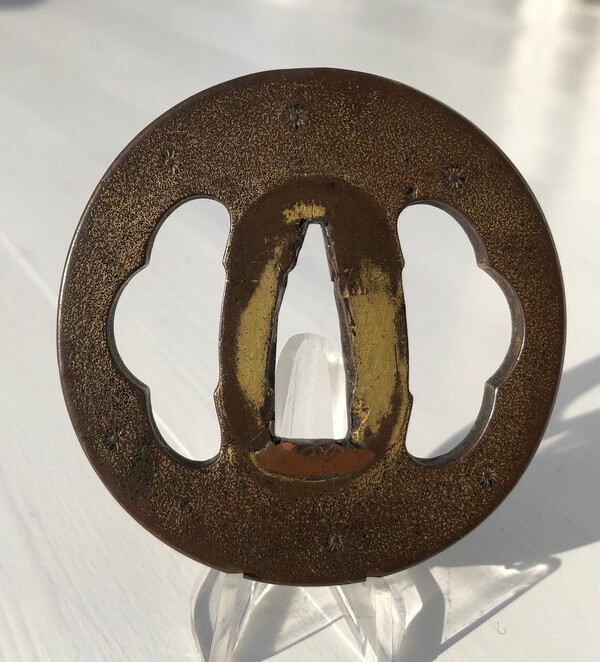

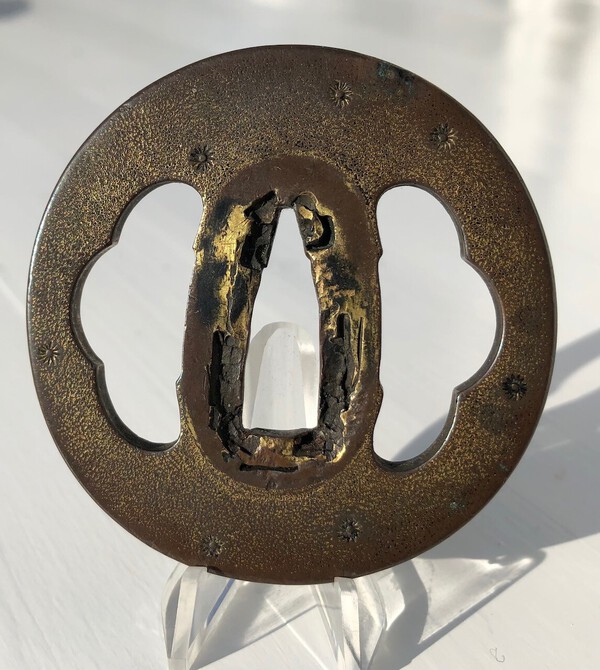
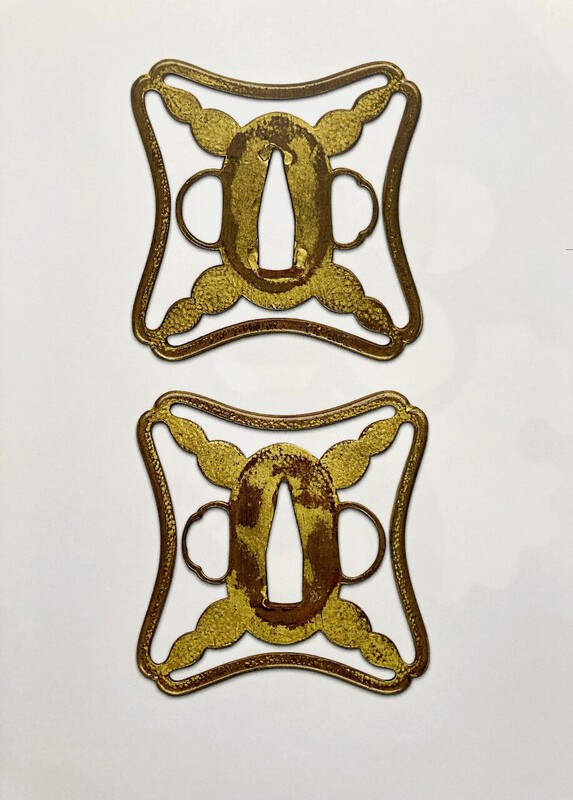

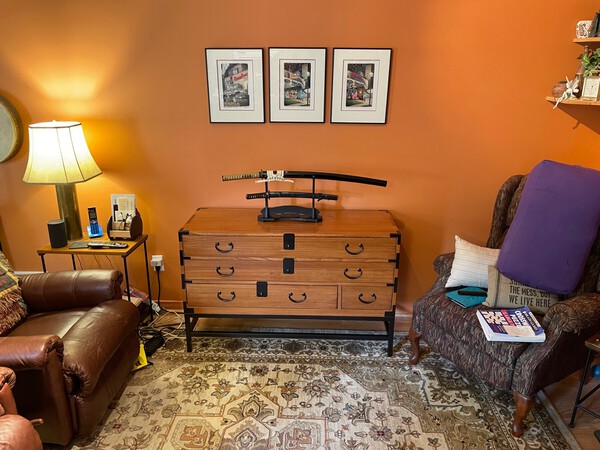
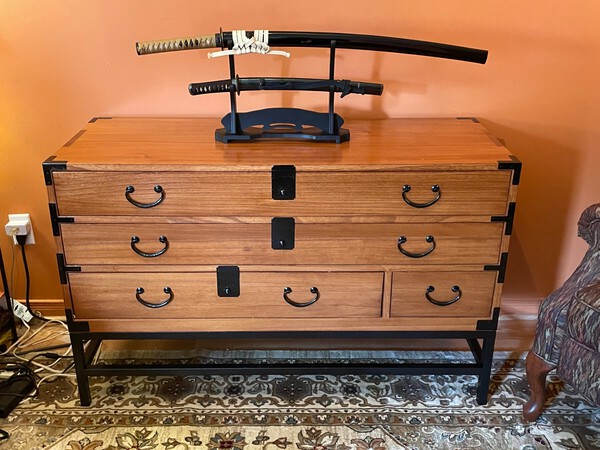
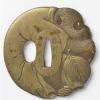
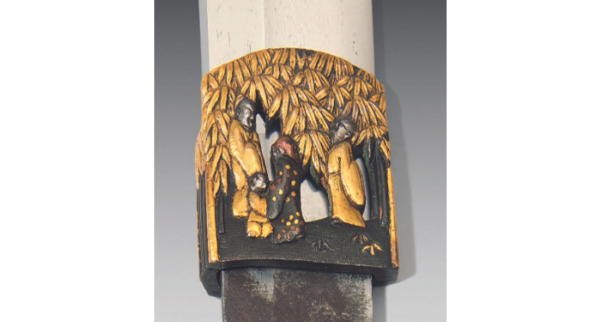
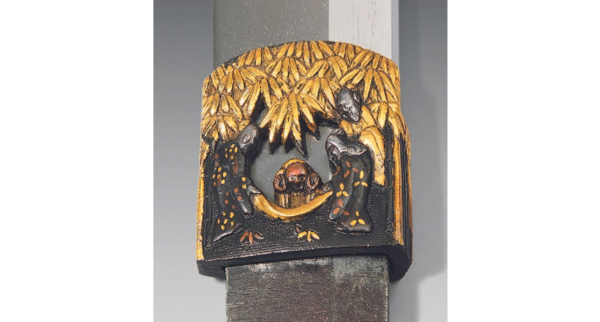
.thumb.jpg.3b9214d8c8defd1449350bd66930b2da.jpg)

